Once I was lost and tried to justify the feasibility of sourcing out the scanning of our negatives (you can read that post here.) But then I saw the light, following this great post by KJ Vogelius. I changed my mind!
Since then I have scanned dozens of films on my Plustek Opticfilm 8100, fastidiously feeding the negative holder frame by frame into the scanner’s maw. I regretted selling my trusty Nikon Coolscan IV / LS-40 with its 6-frame negative feeder. That was a great scanner but always under threat of sudden death. Ten years old, bought second or third hand I could not trust it to keep working indefinitely. But, I was silly to sell it, I know that now.
Then I tried all kinds of flatbed scanners from Canon and Epson and found them unworthy. The Plustek got me back on track, apart from the slowness…
The possibility of a Reflecta
I have been reading about the Reflecta scanners for some time now, ever since the 10M came out. Honestly, I never believed the boasted 10000 dpi resolution, which was confirmed to me by this review. As it looks, the maximum resolution is about 4300 dpi which is still pretty great. Setting the scanner’s resolution to 10000 dpi will not get any increase in real resolution, only gargantuan file sizes! Thus 5000 dpi is the sweet spot for this scanner, offering a resolution that gets the maximum out of 35mm film.
If you consider that the Plustek Opticfilm 8100 or 8200 can coax ‘only’ 3800 dpi out of the negatives, and for that you have to dial in 7200 dpi – the decision seems obvious by the merit of resolution.
So let’s also consider the prices of these scanners. The Plustek goes for about 220€ here in Olde Europe while Amazon carries the Reflecta without the horrendously costly Silverfast software for 585€. That’s a 365€ difference, a Euro a day for one year! Now if I can stick in a 6-frame strip of negatives or even a whole 36-frame film and the thing correctly recognizes (most of) the separate frames, I’ll be very happy. Set up the scanner, feed it the film and go away for an hour or two. That’s all I want in fact. If the results prove to be great, the better!
So, now let’s get to the serious stuff…. The Test!
The unboxing
Now, that Plustek scanner has a great build quality, seems sturdy and gives confidence in its future. Furthermore, it’s very quiet in operation. Will the Reflecta’s build quality be up to its technical promises? Let’s see; at least I hope it is, as I already sold my scanner to a pal. Well, if it does not work out, Amazon has that great returns policy…
The Reflecta comes in quite a big box for the dimensions of that scanner, that’s my first impression. I checked the measurements before and noted that it’s a bit smaller that an A4 sheet of (photo-)paper, though somewhat thicker…
‘Big box, but very light’ is my second thought. In fact, when I open it up and pull out the well-protected contraption I notice it’s light, very light! Especially compared to my Plustek. Well, I guess that warranty is good for something! In fact, the Reflecta feels very plasticky and insubstantial, despite its robust looks.
Initial testing
Software installation is painless on my Mac (yeah, PC certainly the same, but there you go for a bit of stickling). Then comes the big moment, I deliver the electric spark to my new scanner and it awakens and starts rattling, clanking and purring… hmmmm, light, noisy… promising!
I grab a strip of negatives and start up Cyberview X5. Unfortunately, I have heard a lot of bad things about that piece of software, and I can say that it looks exactly like that. A preview scan of my 6 negatives is quickly under way and the scanner rattles happily along until an error message appears on my screen. OK, can happen. I make sure I’ve got the latest versions of everything and go at it again… same, same. Darn, no good, I need an alternative!
I own Vuescan, it’s served me well until now, on EVERY scanner I’ve owned. There’s Silverfast, a contraption I don’t like at all. Convoluted user interface, obscure settings, always shifting and changing presets. But, it gave decent results during my last tests with the Plustek. The problem is, the Silverfast license is linked to the specific scanner and if you change scanners you have to buy a new license… at a stiff price even with an ‘upgrade discount’. I consider that bad commercial practice! But I’ll test a trial version for sure.
I switch to Vuescan first, my goto scanning software and after some coaxing, it does in fact pull in the strip and makes a pretty good job of sorting out the boundaries of the negatives. Result OK, fast enough and if I can leave it to scan a whole roll unattended it will be OK. Just for fun, I scan the same strip with Silverfast trial. It also works, no problems, though for now, I think I will stick with Vuescan!
Now the quality testing
Not wanting to play the pixel peeper here and analyze the scans under the microscope, I will just do some real life appraisal of the scan quality versus the Plustek. I copied some of my Plustek scans from my library (the original scans, straight out of the scanner, mind you) and rescanned the same negatives with the Reflecta. Of course I used the same software, my trusty Vuescan and set the new scanner to 5000 dpi as that’s supposed to be the setting resulting in the maximum resolution it is capable of without blowing up the files unnecessarily. The Plustek files were scanned at 7200 dpi, but as that scanner is supposed to max out at 3800 at that setting, we could suppose that the Reflecta will win this duel.
So here we go:
The film used is a not too great one but one I love for its results and it’s price: Fomapan 100. And be aware that these scans are straight out of the machine, no retouching whatsoever!
The first photo is a portrait of my brother in law, the Leitz Summitar gives it a nice glow, so not the sharpest photograph, but lots of character.
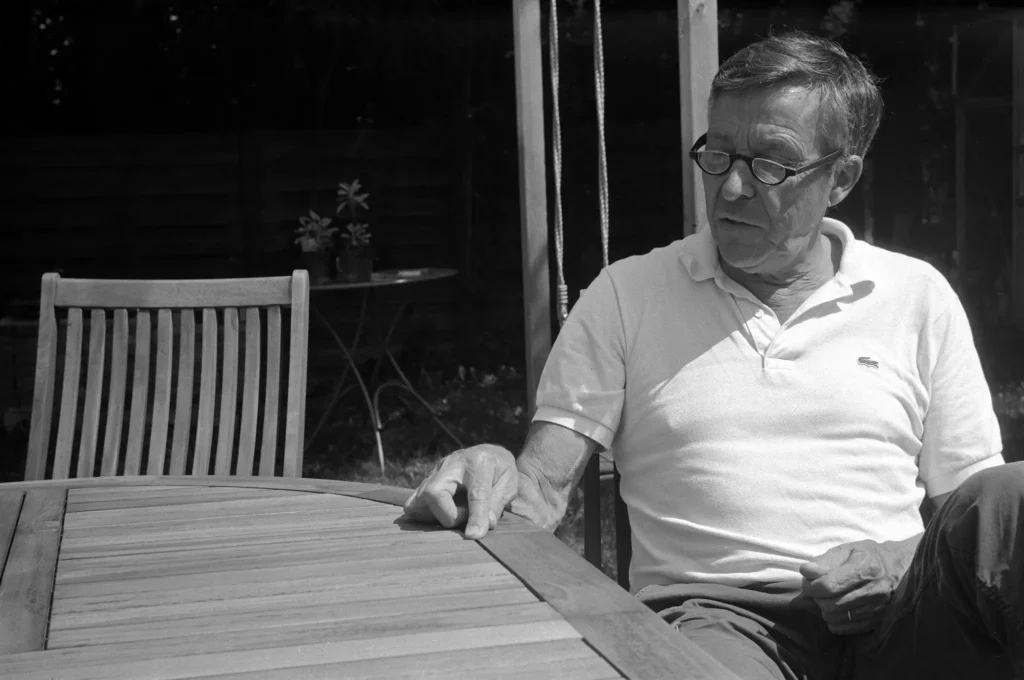
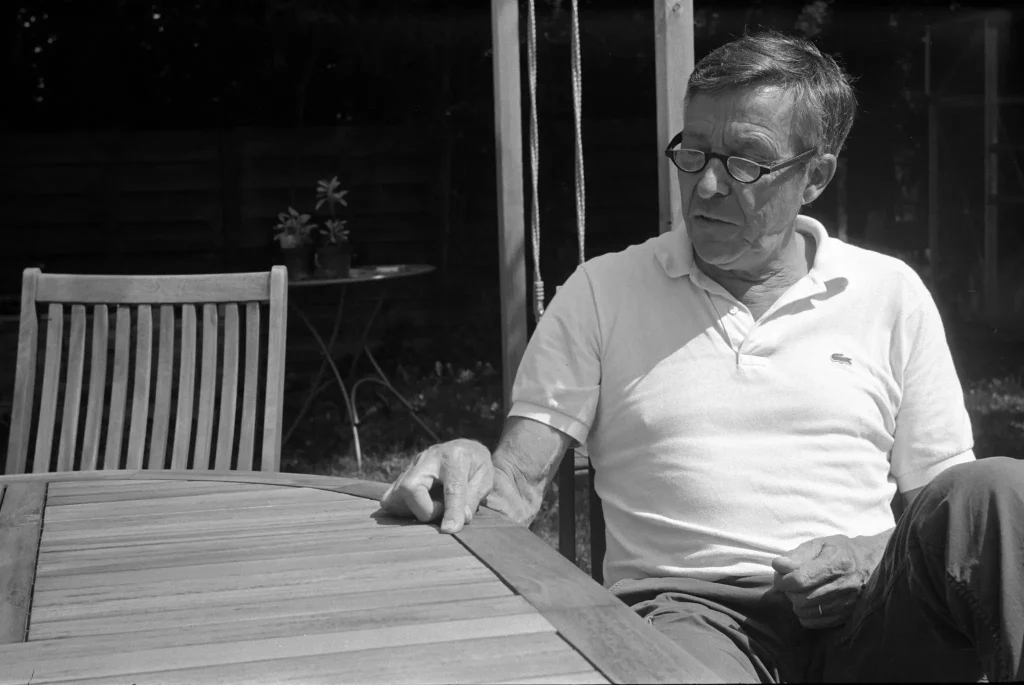
I honestly prefer the Reflecta version as it shows a marginally better resolution and slightly better shadow detail and better highlights. Though without a direct comparison, I would equally like the Plustek’s result.
Let’s see what happens with a shot of some bikes:
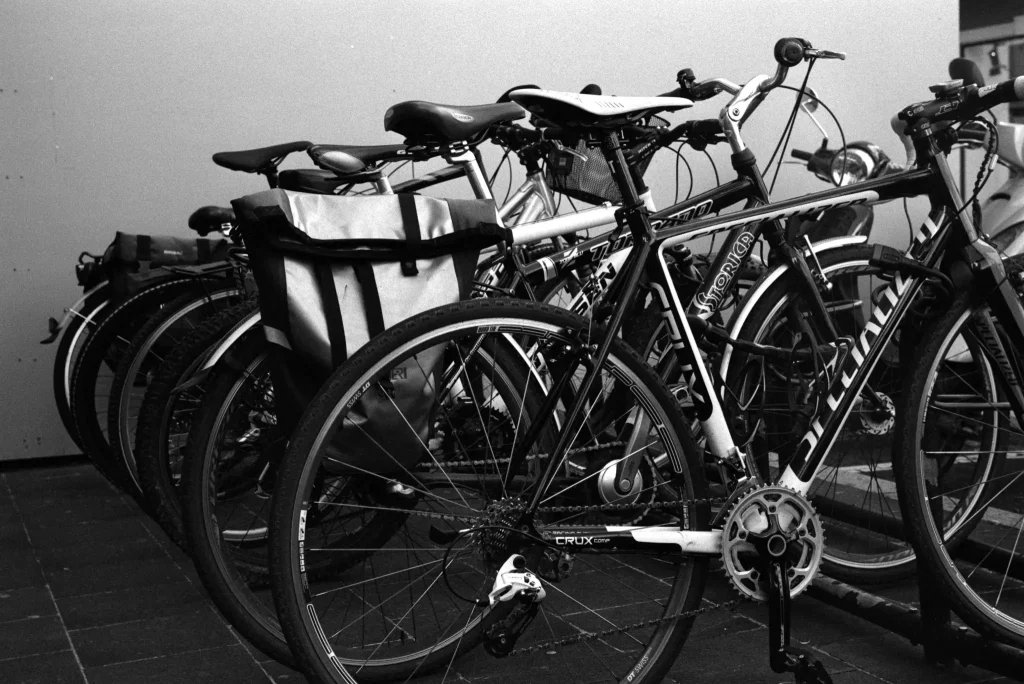
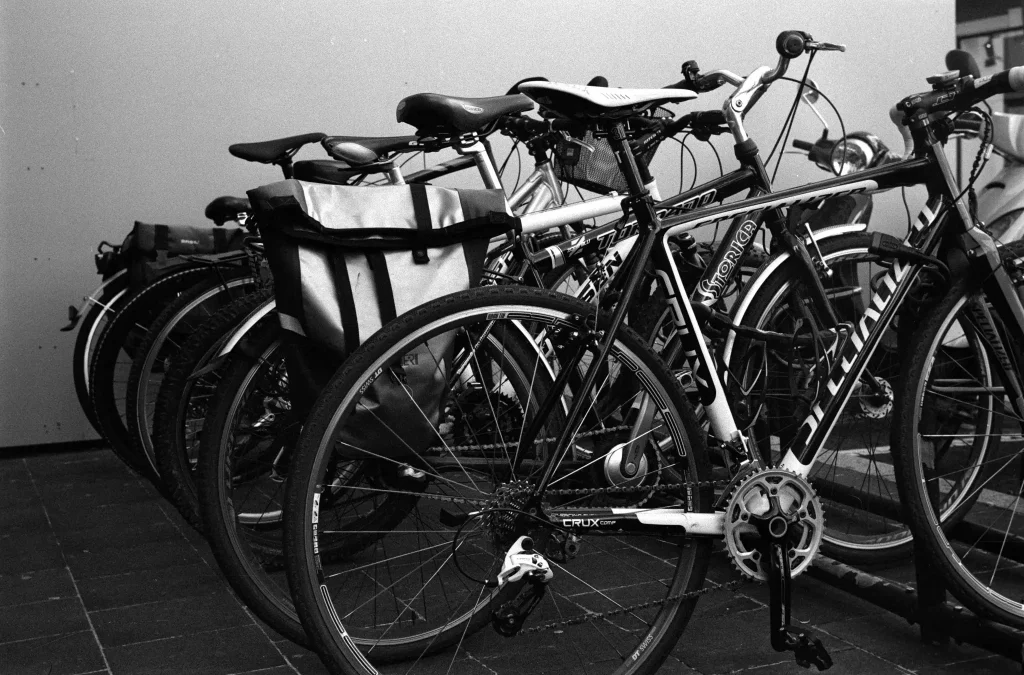
Again nearly a draw, slightly better resolution and toning with the Reflecta! I guess this will be the final result of quality testing. Just two more examples and we’ll get to the batch scanning test!
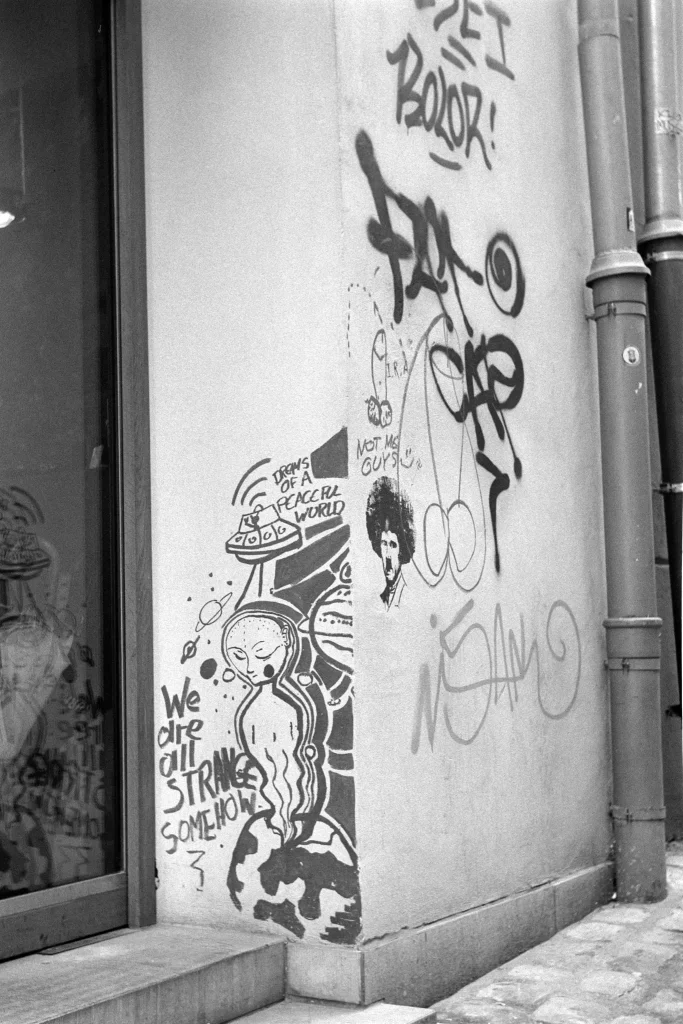
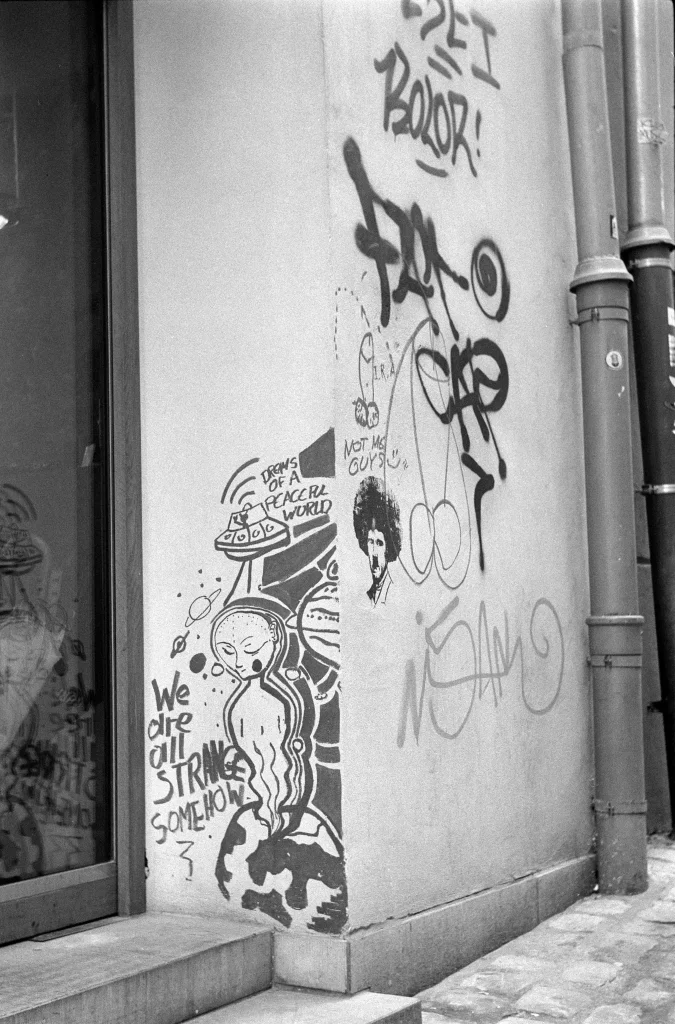
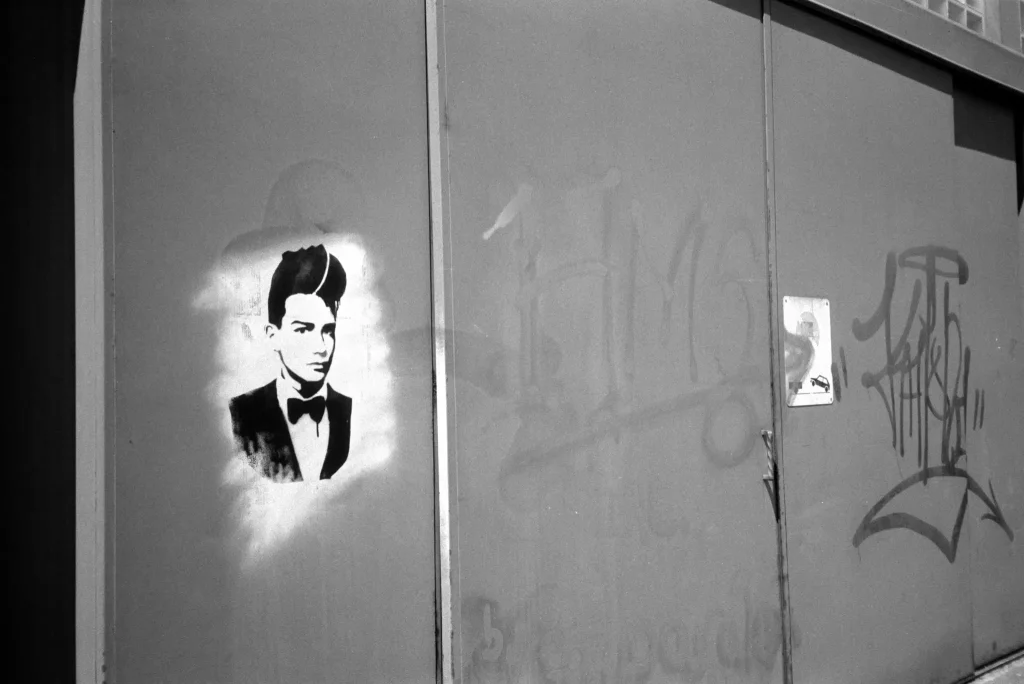
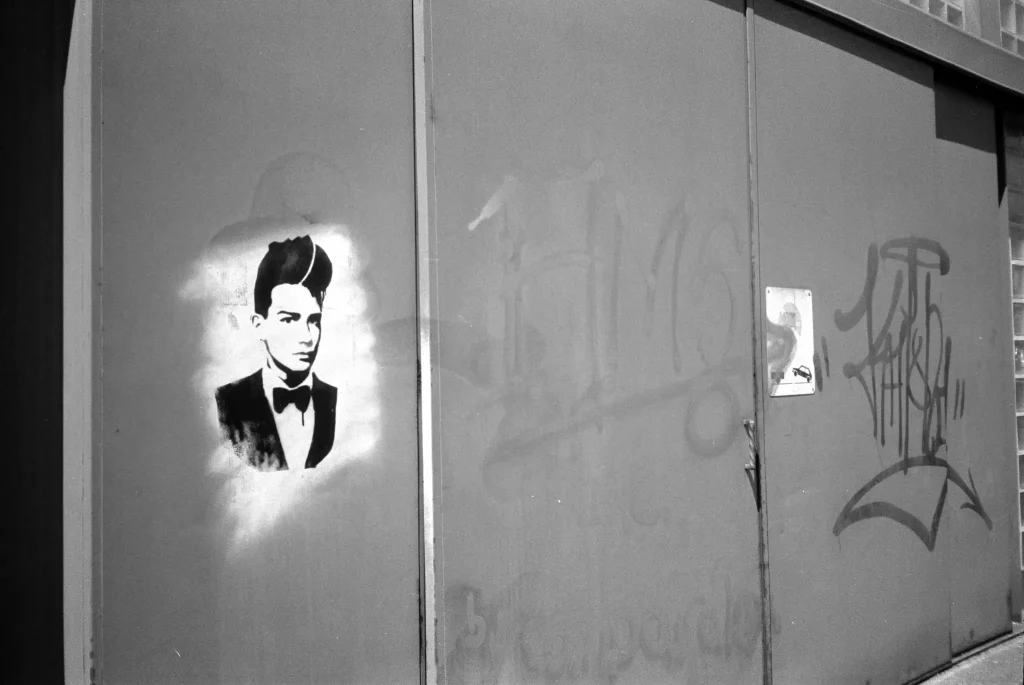
Honestly, for me, at least looking at the original files, not the necessarily downsized ones that appear here, the crown goes to the Reflecta, but it’s not an overwhelming vistory. I could very well live with the results of the Plustek Opticfilm 8100. File sizes is another thing. In order to get the max resolution of 3800 dpi out of the Plustek I have to scan at 7200 dpi which gives much bigger files with lots of redundant pixels. The Reflecta on the other hand delivers a solid 4300 dpi at the 5000 dpi setting. Good!
I must say that scanning individual negatives out of a strip is a breeze! The manual says it must be a strip of minimum three negatives but as I am crazy, I tried a strip of two and it worked. I only have to tell Vuescan which negative I want and it advances to the correct one, mostly frames it precisely and does it’s magic. No fiddling with a film holder, trying to get the negative strip to lie down and not move until I close it. No risk of touching it with my greasy fingers trying to hold it down.
OK, the film strip gets inserted into the scanner sans holder, and I just touch it by the edges. Not much risk there. A strip of 6 does not touch anything while being scanned. What I fear though is that when I scan a whole roll where the frames advance for the preview scan, then return to number one, the film will move over my desk, unprotected!
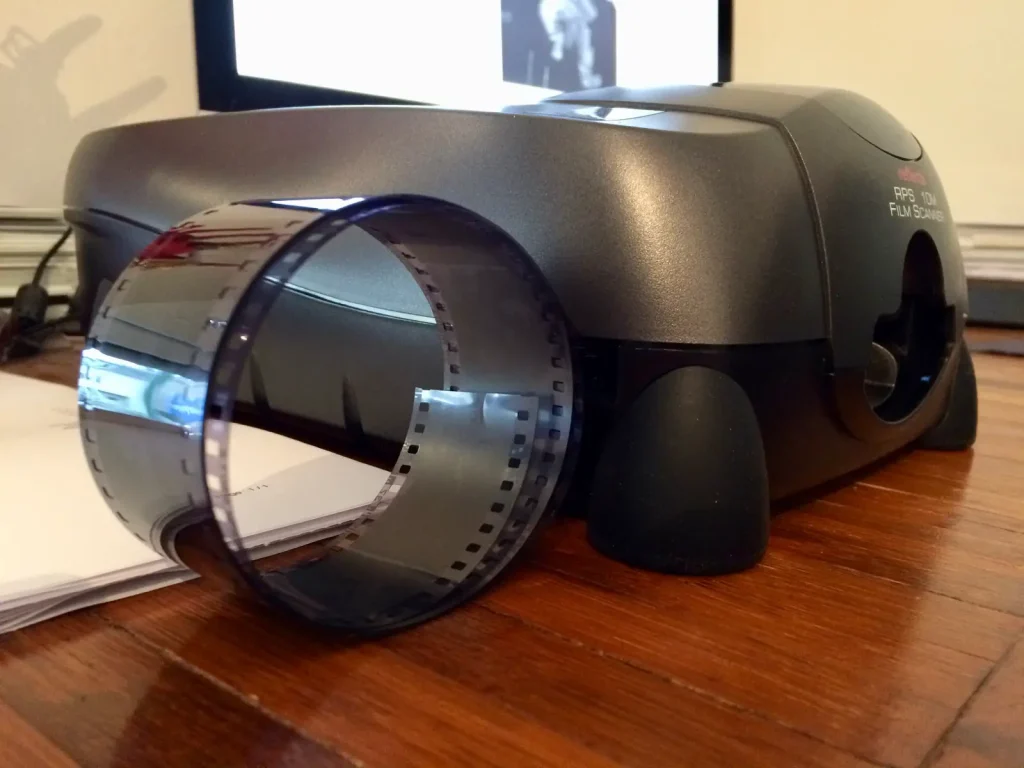
Too bad they did not think of a simple holder or rounded, box-like contraption on both sides of the scanner that would give my film some protection. Perhaps a do-it-yourself project for those long winter evenings!
OK, here comes the mother of all tests, the feature why I decided to give the Reflecta RPS 10M a try.
Scanning a whole roll of 36 frames!
I insert my film roll and nicely ask Vuescan to give me a preview of the negatives. Scan, rattle and roll – the Reflecta does its thing. It advances frames, scans at 500 dpi for the quick preview and advances again. I stare through the small window on top to try to detect any errors but so far, so good. It’s possible to do some correction when the frame is not quite centered by using the Reverse and Forward buttons, but you have to be fast as the scanner only pauses briefly before scanning. As I said I did not have to use them during pre-scan.
Now I have a long list of negatives in Vuescan and I go through them one by one to correct the frame lines Vuescan selected. It’s mostly OK and needs only light adjustments and of course the normal switch from landscape to portrait orientation. Pre-scan took about 12 minutes for the whole roll!
Then it’s time to hit SCAN. And the long wait begins.
Starting at 1:35, at about two minutes a frame without any sharpening, ICE or other corrections, it should be done about 2:47…
OK, it took until 2:58 to complete the batch scan! Just 11 minutes over estimated time… not too bad! At least faster than manually feeding the negatives into the Plustek. Framing was just right, no hiccups, no hassle… seems like this is my new scanner! One hour and twenty-two minutes for a whole roll of film is really not bad at all. Results look good – they will need some work in Lightroom as always, but there are keepers among them. I can let the scanner run unattended, come back and find my scans done. What more can I ask? Scan quality is really excellent, at least on par with my Nikon LS40 and a tad better than the Plustek.
One problem I encountered while scanning whole rolls was that the prescan is of no use. The scanner does not apply the slight corrections I made to some of the framings. In Vuescan it just scans the roll, in Silverfast it quickly does some frame by frame review of the whole roll, supposedly to get the framing right, and then scans the roll. Fortunately, the framing, until now has been quite accurate.
Bad point is that the scanner does no ICE or other adjustments when batch scanning. So you have more work afterwards, especially as ICE works quite well on the Reflecta.
My early conclusions
I heard bad things about the Reflecta RPS 10M – banding, incorrect frame recognition, many returns. But my short experience up to now has just shown me great qualities of a really fine machine. Short of the Cyberview software that won’t run correctly (I guess there’s some minor snag that I’ll have to put right), I am very happy with this scanner. It does everything I want from it and it does it quite fast. The scan quality is excellent and batch scanning works (with the limitations explained above). Now I’ll have to put some more rolls through it in the coming weeks (actually I did two rolls today) and see if it does not fail. In one month, the Amazon grace period will be up and until then I’ll have to be certain of it.
All I can say is that it looks great so far and I guess we will work together for some time. If anything new comes up I’ll certainly add to the comment section of this review to let you all know!
You will however have to take into account the cost! As I said, Amazon carries it for € 585,00 here in Europe while a Plustek 8100 goes for € 220,00. Is the slight but noticeable boost in scan quality and the convenience worth the price – you’ll have to decide for yourselves. More so as the build quality does not equal that of the Plustek. Might not be important, but it’s a fact. Furthermore Reflecta limit their warranty to 10,000 scan cycles, which includes any pre-scans, re-scans etc. Good for only about 138 rolls of film when you consider that each frame will be scanned twice, one pre-scan and one scan….
Next project will be another shootout I guess, but a software one, between Vuescan, Silverfast and Cyberview (If I can get it to work properly…)
Color scans with Silverfast and Vuescan
After some discussions about color scans from the Reflecta in the comments section I add some scans just for information. The color scans are straight out of the scanner, made with Silverfast with the Negafix filter for Portrait 400 applied and with Vuescan without any filter. The Silverfast scans are quite over the top with saturation I think and the Vuescan examples are quite flat but will tweak nicely (first Vuescan, second Silverfast):
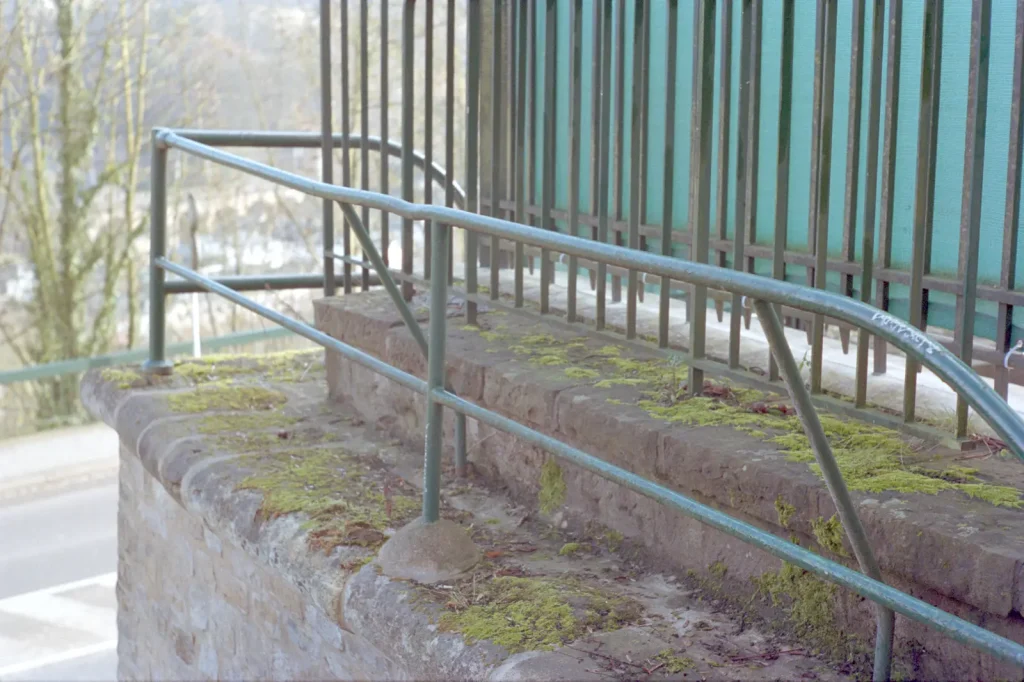
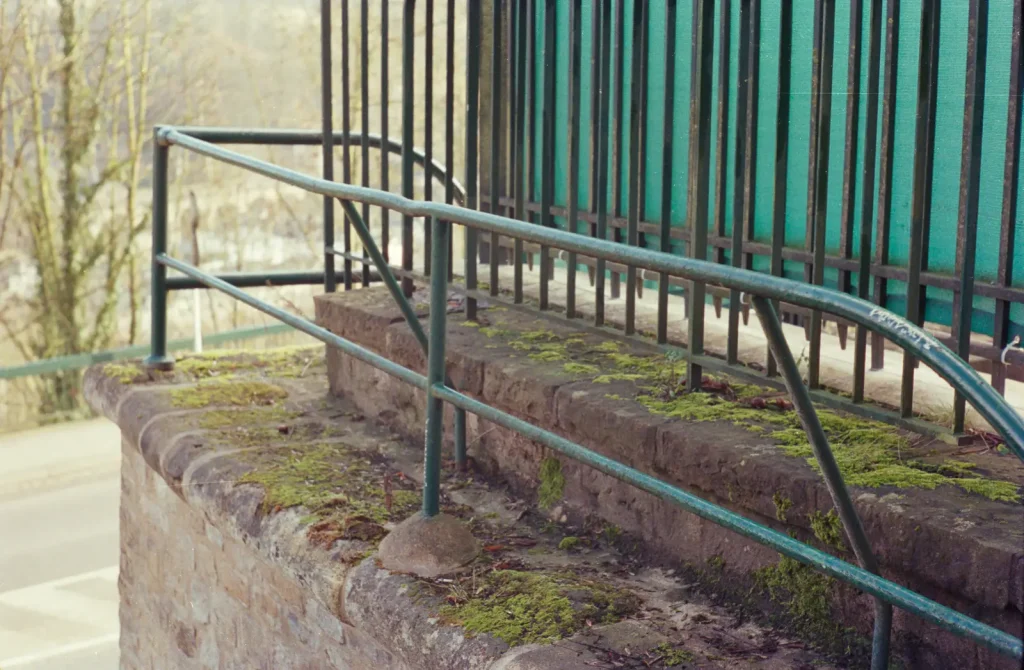
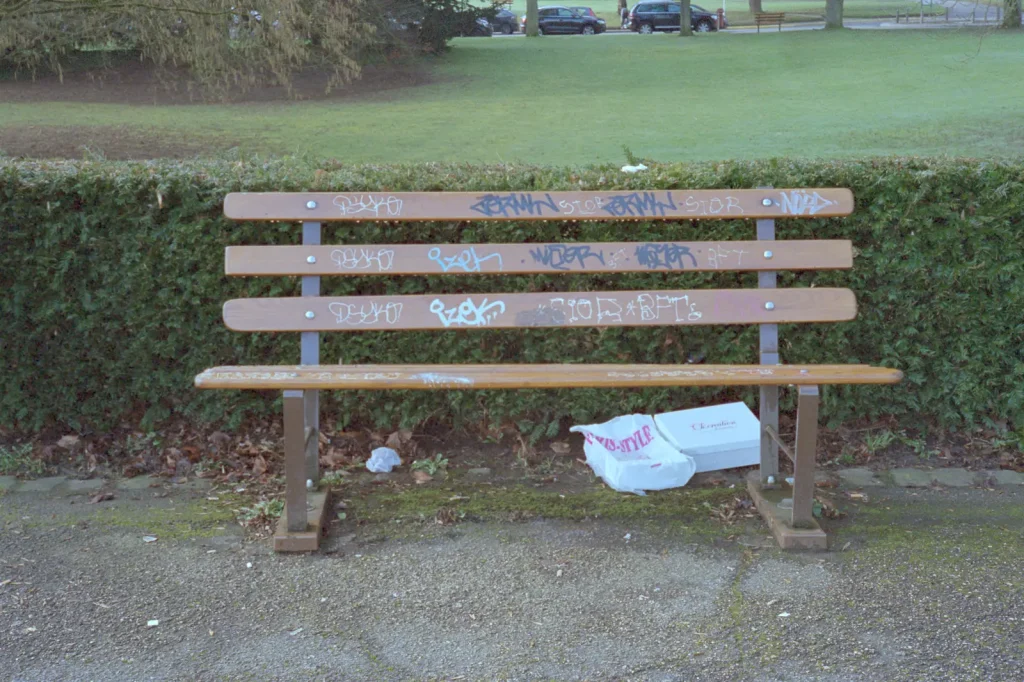
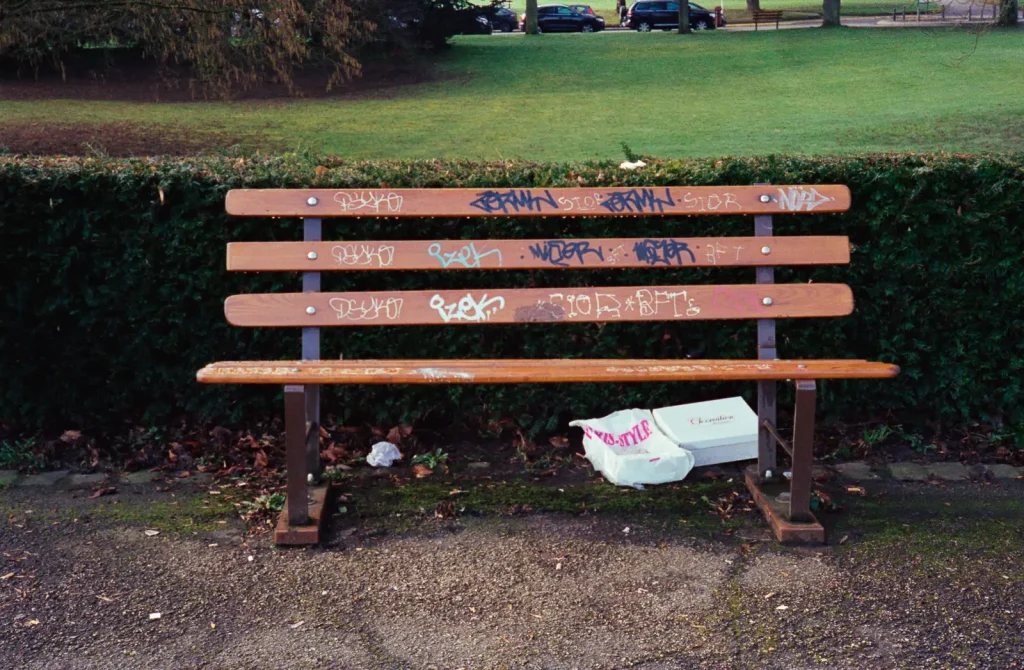
Thanks a lot for reading this, I hope I could give you some useful information.
Don’t hesitate to stop by on my blog: www.whyfilmcameras.com
Share this post:









Comments
Stephen on Reflecta RPS 10M Review – Reflections on Homes Scanning – by Frank Lehnen
Comment posted: 14/01/2017
It seems a real shame that the big boys of digital photography no longer wish to be involved in scanning, since the scanner is really just a digital camera.
Anyway, very nice to see some attention being paid to one of the lesser known modern products.
I am going to have to look for a replacement for the Nikon as I have just started using medium format 120 film...
The search begins.
Comment posted: 14/01/2017
Comment posted: 14/01/2017
Comment posted: 14/01/2017
Terry B on Reflecta RPS 10M Review – Reflections on Homes Scanning – by Frank Lehnen
Comment posted: 14/01/2017
Thanks for your post. Before reading it, I would have thought batch scanning uncut 35mm film could be a good idea, rather like when I was enlarging and doing quick proof prints to 6x4 inches. I would eventually cut the film into strips of 6 for filing and storage. The relevance of this is that it was very evident that I wasn't proofing every neg and I started to think that given the time it takes to scan a roll on your Reflecta, and without applying any adjustments at that, my time could be better spent selecting which negs I wanted to scan and apply corrections. Each scan takes longer, but saves so much time later when editing in imaging software.
Given the not inconsiderable difference in price between the Reflecta and the Plustek, and I rather gather you are saying the Reflecta isn't exactly a Plustek killer, what are your thoughts on this?
As you will know, colour negative film poses more problems that b/w; what are your thoughts on how the Reflecta performs here? Could this justify the higher price?
I've recently acquired a book dedicated to scanning and one of the tips that you may find useful when scanning b/w negatives is to scan them as slide material and then convert to positive in your imaging software. Strange as it may at first seem, the resultant scan is superior. Give it a go and see what you think.
Frank Lehnen on Reflecta RPS 10M Review – Reflections on Homes Scanning – by Frank Lehnen
Comment posted: 14/01/2017
In fact, I'm still not sure about the Reflecta. You are right, and the thing that bothers me most is that I will end up with 36 frames I have to correctly crop (not as in cropping but cutting some black borders that remain sometimes), that I have to edit, to evaluate....
Sure I edit my scans always, but even batch scanning with that machine does not in fact save all that much time. Now if I could select my frames after a pre-scan, adjust them correctly and get results I can immediately use, it would be great.
As it is it saves some time, yes, but the time / cost equation is quite biased. We'll see in a few days what I decide.
As for color scans, I did some of older negs and the results were very much OK. Depends on the software of course. That Silverfast with Negafix setting for Portra 400 for example gave extremely saturated scans. Vuescan on the other hand puts out very neutral, even pale scans but better suited to work on later. Now perfect results might be possible by scanning as negative and treating the scans to ColorPerfect. Best results, but not much difference between both scanners apart from the resolution and toning!
I'll definitely try this for black and white too. Thanks for the hint!
Comment posted: 14/01/2017
Comment posted: 14/01/2017
Comment posted: 14/01/2017
Comment posted: 14/01/2017
Comment posted: 14/01/2017
Comment posted: 14/01/2017
Comment posted: 14/01/2017
Comment posted: 14/01/2017
Comment posted: 14/01/2017
Comment posted: 14/01/2017
Comment posted: 14/01/2017
George Appletree on Reflecta RPS 10M Review – Reflections on Homes Scanning – by Frank Lehnen
Comment posted: 14/01/2017
To get a fine digital print a really good scanner is required.
For a screen view here or there just a flatbed one works fine
Comment posted: 14/01/2017
Julian Master on Reflecta RPS 10M Review – Reflections on Homes Scanning – by Frank Lehnen
Comment posted: 14/01/2017
Comment posted: 14/01/2017
Comment posted: 14/01/2017
George Appletree on Reflecta RPS 10M Review – Reflections on Homes Scanning – by Frank Lehnen
Comment posted: 14/01/2017
First ones too weak, seconds yellow casted.
Also, try scanning to tiff, someway better to lately LR handling
Comment posted: 14/01/2017
Kenneth on Reflecta RPS 10M Review – Reflections on Homes Scanning – by Frank Lehnen
Comment posted: 15/01/2017
Comment posted: 15/01/2017
Mark on Reflecta RPS 10M Review – Reflections on Homes Scanning – by Frank Lehnen
Comment posted: 17/01/2017
Comment posted: 17/01/2017
Comment posted: 17/01/2017
Dustin on Reflecta RPS 10M Review – Reflections on Homes Scanning – by Frank Lehnen
Comment posted: 20/01/2017
Comment posted: 20/01/2017
Dustin on Reflecta RPS 10M Review – Reflections on Homes Scanning – by Frank Lehnen
Comment posted: 20/01/2017
Comment posted: 20/01/2017
Dustin on Reflecta RPS 10M Review – Reflections on Homes Scanning – by Frank Lehnen
Comment posted: 21/01/2017
Comment posted: 21/01/2017
Comment posted: 21/01/2017
Comment posted: 21/01/2017
Andrew Chang on Reflecta RPS 10M Review – Reflections on Homes Scanning – by Frank Lehnen
Comment posted: 22/01/2017
So I considered the 200AI Plustek which looks like a great option with the right software, but a little slow when it comes to speed. The Reflecta 10m also looks good from a speed perspective but I too read up on banding issues that were slightly off putting.
So, veering towards going down the flatbed root of the Epson 850. I've seen some great scans from the perfection series. I think you mentioned earlier that you their output didn't were not as favourable as those from a dedicated scanner, would it be possible to elaborate.
As I'm not looking for super high resolution scans and consider colour and rendering more important, an outside option if i can get hold of one is the Kodak Pakon 135
Comment posted: 22/01/2017
Comment posted: 22/01/2017
Comment posted: 22/01/2017
Comment posted: 22/01/2017
Dustin on Reflecta RPS 10M Review – Reflections on Homes Scanning – by Frank Lehnen
Comment posted: 23/01/2017
I was in a bidding war for a 7400 machine but some chump outbid me literally seconds before I could up my max bid. Through ebay sold listings, I'm seeing you can pick up a plustek machine used for anywhere from 60-100 depending on the model. I decided that at least this way I will not have to worry about lack of a warranty, prior owners misuse etc. At this point I'm just ready to scan and start saving a little money and put that money into shooting more film! One of the reasons I haven't been able to get film developed is the price/scan cost. (Also I really need to get into B W soon even though I love color film, the price on BW film is much more affordable).
Comment posted: 23/01/2017
Dustin on Reflecta RPS 10M Review – Reflections on Homes Scanning – by Frank Lehnen
Comment posted: 23/01/2017
Comment posted: 23/01/2017
Comment posted: 23/01/2017
Comment posted: 23/01/2017
Comment posted: 23/01/2017
Comment posted: 23/01/2017
Comment posted: 23/01/2017
Comment posted: 23/01/2017
Comment posted: 23/01/2017
Comment posted: 23/01/2017
Comment posted: 23/01/2017
Comment posted: 23/01/2017
Comment posted: 23/01/2017
Comment posted: 23/01/2017
Dustin on Reflecta RPS 10M Review – Reflections on Homes Scanning – by Frank Lehnen
Comment posted: 23/01/2017
Comment posted: 23/01/2017
Comment posted: 23/01/2017
Comment posted: 23/01/2017
Comment posted: 23/01/2017
Michael on Reflecta RPS 10M Review – Reflections on Homes Scanning – by Frank Lehnen
Comment posted: 25/01/2017
I recently bought a PacificImage PrimeFilm XA (which I understand to be the same device), but returned it. I knew getting into it (based on the specs) that there would be very little overscan. But whenever I did a full/maximum area scan (at that 36.5 × 24.3mm), I always had an unusable half-millimeter or so at the bottom edge of the image. You could see it in Cyberview, SilverFast, and Vuescan—so I don’t think it was software. Just a rough black band at the bottom where you’d expect to start to see sprocket holes. It meant that 35mm negatives always clipped somewhat significantly on their top edge, which is obviously a problem.
I emailed back and forth with the PacificImage US support, but they were pretty unhelpful—suggesting that this is normal. So I ended up returning the scanner and have been hesitant to pick up another, thinking it would likely just have the same problem. I could deal with the occasional registration/frame-identifaction problem if I had that half millimeter back! And now I am missing the auto-feeding, which is remarkably uncommon in this niche field.
Comment posted: 25/01/2017
Comment posted: 25/01/2017
Comment posted: 25/01/2017
Terry B on Reflecta RPS 10M Review – Reflections on Homes Scanning – by Frank Lehnen
Comment posted: 25/01/2017
Before you spend on software, see if the Plustek can do a straight scan by selecting only two parameters: scan dpi and input sharpening. Thereafter carry out image corrections using your normal imaging software. Unless your negatives are damaged, this works well, and with my Canon flatbed this is how I work. I use the acquire feature and scan directly from my imaging software, which is Zoner Photo Studio Pro, using the Canon driver setting. Obviously, I can't emulate a film emulsion at the scan stage but, for me, I don't value this feature anyway as I find the straight scan gives me a preferable result. This won't be to everyone's taste, though.
The main issue with this process is that damaged film or dust which isn't corrected or removed and needs time in the editing stage. But the trick is that by doing it yourself you don't usually need to scan every negative, be selective, and work only on the best. If this doesn't work for you, then you will need to seek advice about which scanning software is best. Personally, I tried Vuescan simply because it came with drivers for my older Canon models and my Minolta dedicated film scanner with runs Windows XP only*, but I didn't think it was worth the cost. My Canon 9000F came with Silverfast SE and I found its user inter-face a pain in the butt to use. And as it wasn't giving me any benefits over my preferred method, I dispense with this when scanning.
* To get round this, I simply purchased a little XP laptop so I could use Minolta's old, but excellent scanner software.
Comment posted: 25/01/2017
Comment posted: 25/01/2017
Dustin on Reflecta RPS 10M Review – Reflections on Homes Scanning – by Frank Lehnen
Comment posted: 27/01/2017
Comment posted: 27/01/2017
Matthew Martin on Reflecta RPS 10M Review – Reflections on Homes Scanning – by Frank Lehnen
Comment posted: 28/01/2017
Comment posted: 28/01/2017
Comment posted: 28/01/2017
Comment posted: 28/01/2017
Comment posted: 28/01/2017
Comment posted: 28/01/2017
Nicolas on Reflecta RPS 10M Review – Reflections on Homes Scanning – by Frank Lehnen
Comment posted: 06/02/2017
The capability of scanning a full roll at once and the good effective resolution was my driver to buy this scan. I wasn't aware of Vuescan, which could I change my decision of buying Silverfast. But since it's done I'm gonna try to make the best of it!
So my experience so far:
- the 10M has more difficulties to align the first frame on a strip of 6 than with a full roll. With a strip, I have a manually adjust the position before the pre-scan, and it will keep it right was doing the Batch scanning.
- I'm mainly working on B&W neg. ICE is of no help here, but you can turn it on and there is nothing in Silverfast to avoid turning it on, even when you select the TriX-400 presets... The results is a full pixelized scan. But I'll try with colour neg I will get next week.
- I'm fairly satisfied with the scan of a full roll at once, except of course for the neg lying on my desk. So will try to build something out of 2 cottage cheese pots of the perfect size for the film to roll in. I will post some result if it work (without altering the neg).
My final thought on a new workflow I will try to use:
- Keeping my B&W film as a roll when developing them (I give my color ones to a store, so get them in 6-strips)
- Scanning the full roll as Tiff, at 2400 dpi, with the film presets of Silverfast as only modifications (at least for the moment)
- Importing the results into Lightroom to select the frame of interest and erase the others.
- Exporting the results in JPEG, of the best quality.
I will be curious to know what kind of settings you are using.
Best,
Nicolas
Comment posted: 06/02/2017
Comment posted: 06/02/2017
martina on Reflecta RPS 10M Review – Reflections on Homes Scanning – by Frank Lehnen
Comment posted: 12/10/2018
thank you very much
Comment posted: 12/10/2018
Richard on Reflecta RPS 10M Review – Reflections on Homes Scanning – by Frank Lehnen
Comment posted: 20/02/2019
Is this the same scanner as the pacific image primefilm xas?
Comment posted: 20/02/2019